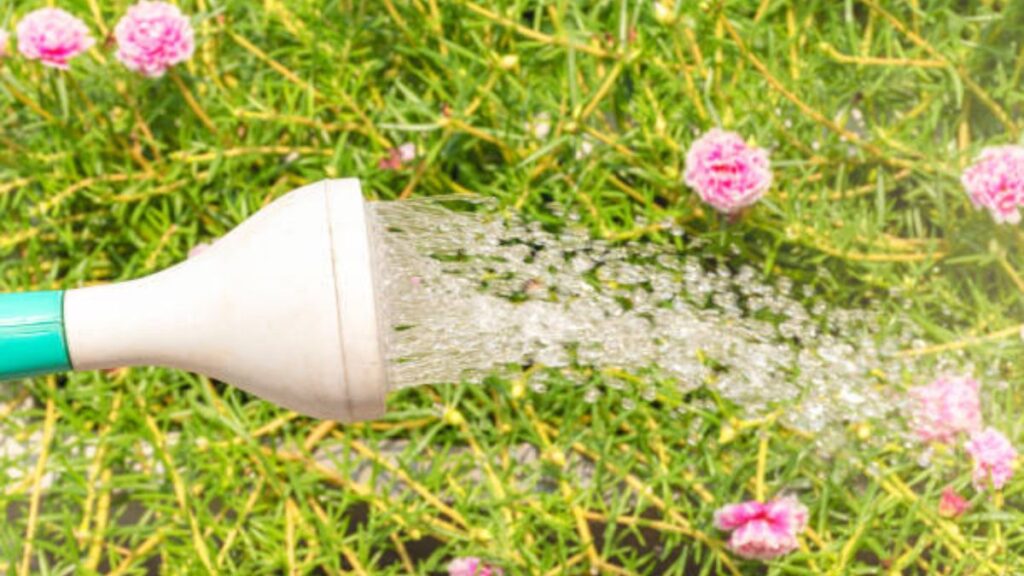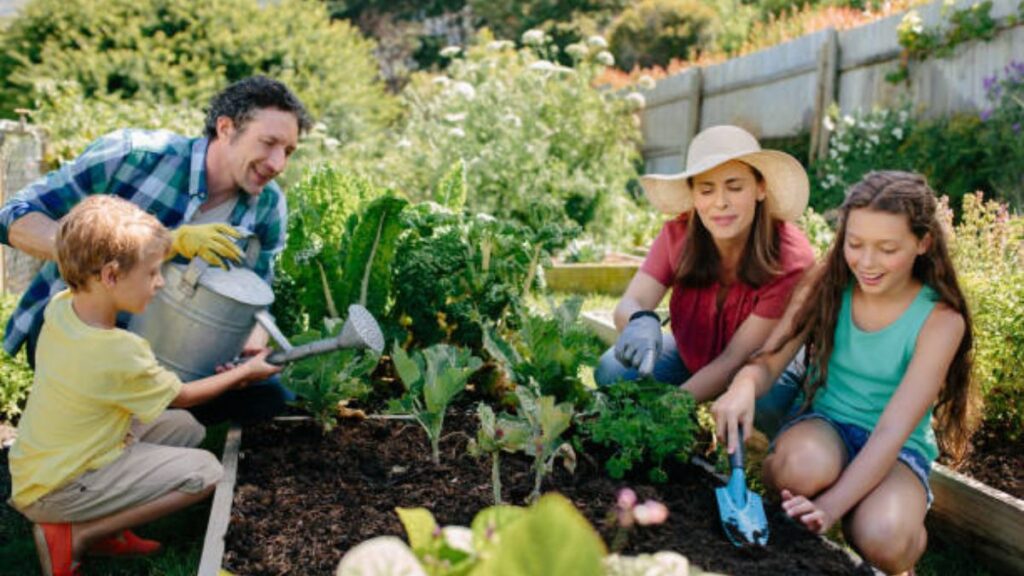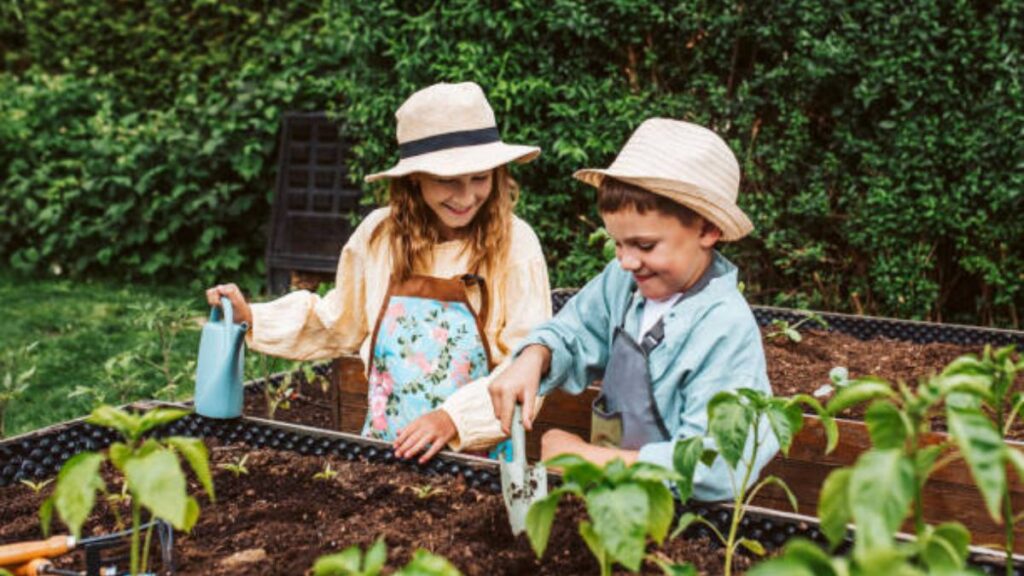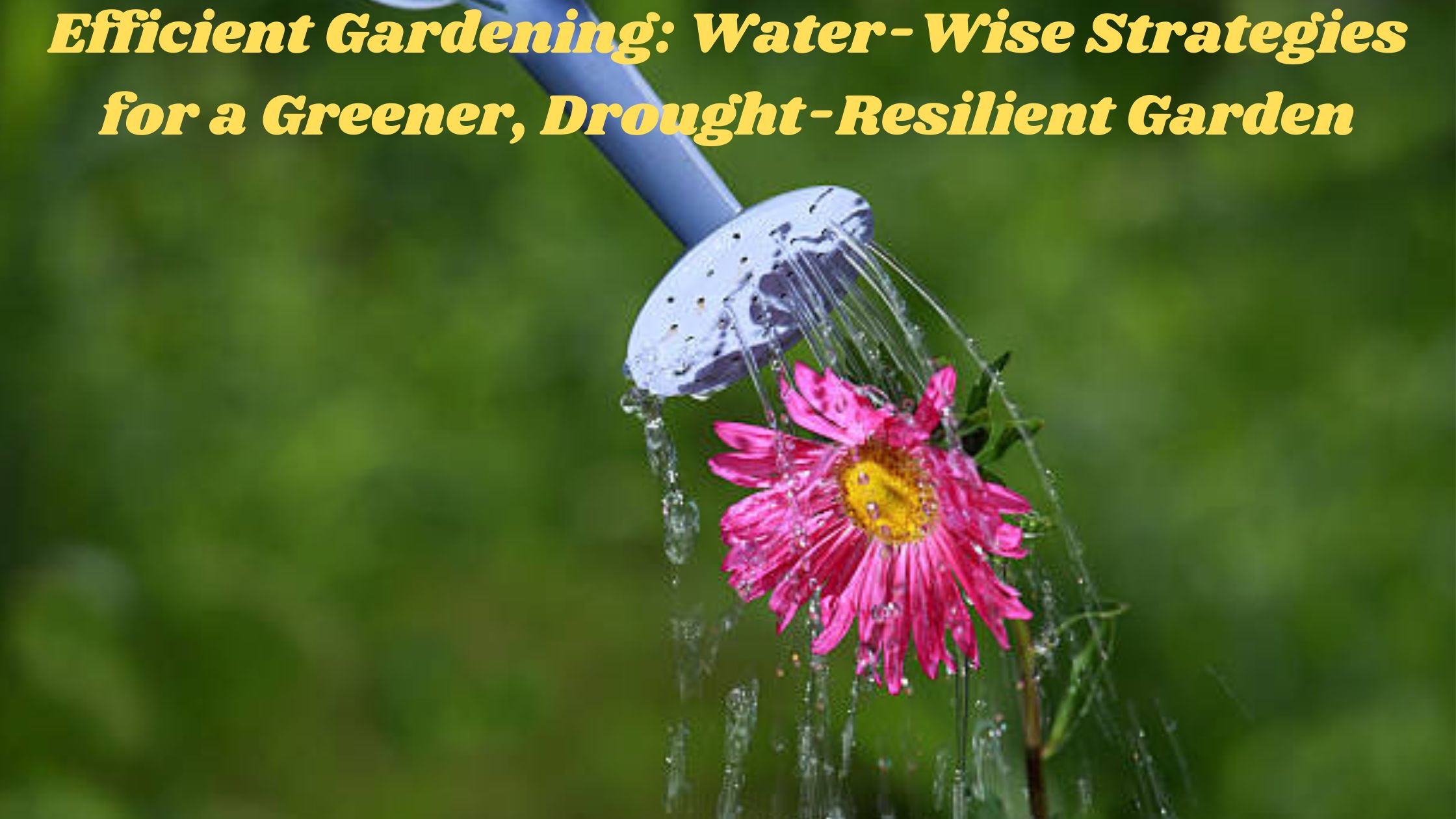Introduction
Efficient Gardening: Water-Wise Strategies for a Greener, Drought-Resilient Garden

In water-wise gardening, also known as xeriscaping, the emphasis lies on sustainable practices that promote efficient water utilization in garden areas. This approach aims to establish thriving gardens with reduced water requirements, making it an ideal solution for regions prone to drought or places where water conservation is a priority.
Water-Wise Gardening Explained:
Water-wise gardening revolves around creating a landscape that minimizes the need for irrigation. The objective is to design and maintain a garden that can thrive with minimal water input. This approach involves selecting geeignete plants, improving soil health, and optimizing watering techniques to ensure the success of the garden.
Key Water-Wise Strategies for Your Garden
To conserve water while maintaining a lush and healthy landscape, it’s essential to incorporate water-wise strategies into your garden. Here are some strategies to consider:
1. Choose Drought-Tolerant Plants:
- Plants naturally adapted to dry conditions require less water.
- Examples include lavender, succulents, rosemary, and native grasses.
2. Use Efficient Irrigation Systems:
- Drip irrigation directly delivers water to the root zone, minimizing evaporation and runoff.
- Soaker hoses release water slowly, allowing for gradual absorption.
- Smart irrigation controllers adjust watering schedules based on weather and soil moisture.
3. Mulch Garden Beds:
- Mulch retains soil moisture, suppresses weeds, and reduces soil temperature.
- Apply a 2-3 inch layer around plants, avoiding contact with stems to prevent rot.
4. Group Plants by Water Needs (Hydrozoning):
- Group plants with similar water requirements together for optimal watering.
- This maximizes water efficiency and plant health.
5. Collect and Reuse Rainwater:
- Install rain barrels to collect runoff from roofs for irrigation during dry spells.
- Design rain gardens to capture rainwater, filter it, and replenish groundwater.
6. Enhance Soil Health:
- Amend soil with compost to improve structure and moisture retention.
- Aerate soil regularly for better water infiltration and root growth.
7. Reduce Lawn Areas:
- Replace water-thirsty lawns with drought-tolerant ground covers or hardscaping elements.
- This significantly reduces water consumption and maintenance requirements.
8. Practice Wise Watering:
- Water early in the morning to minimize evaporation and allow plants to absorb moisture before the heat.
- Water deeply but less frequently to encourage deep root growth and drought resistance.
- Use a rain gauge to monitor rainfall and adjust watering schedules accordingly.
9. Incorporate Permeable Hardscaping:
- Use permeable paving materials like gravel or pavers with gaps to allow rainwater to seep into the ground.
- This helps maintain soil moisture and reduces the need for irrigation.
10. Regular Maintenance:
– Prune regularly to reduce plant water demand.
– Inspect irrigation systems for leaks or clogs to ensure efficient water use.
By implementing these water-wise strategies, you’ll create a sustainable garden that thrives on minimal water, helping conserve resources and reduce your environmental impact.
Benefits of Water-Wise Gardening
In the realm of gardening, water-wise techniques, often known as xeriscaping, offer a multitude of advantages beyond mere water conservation. Here are some key benefits to consider:

1. Water Conservation:
- Primary Advantage: By incorporating drought-tolerant plants, efficient irrigation systems, and intelligent landscaping practices, water-wise gardening significantly reduces water usage.
- Impact: This helps preserve a valuable natural resource, particularly in areas prone to drought or water restrictions.
2. Cost Savings:
- Lower Water Bills: Reducing the need for irrigation translates to substantial savings on water bills.
- Reduced Maintenance Costs: Drought-tolerant plants often require less fertilizer, pesticides, and maintenance, further lowering gardening expenses.
3. Environmental Sustainability:
- Reduced Chemical Use: Water-wise gardens often rely less on chemicals like fertilizers and pesticides, minimizing environmental runoff and pollution.
- Improved Soil Health: Many water-wise gardening practices, such as using mulch and compost, enhance soil structure and health, leading to long-term sustainability.
4. Enhanced Biodiversity:
- Attracts Pollinators: Native and drought-tolerant plants often attract bees, butterflies, and other pollinators, promoting biodiversity in your garden.
- Supports Wildlife: Water-wise gardens can serve as habitats for birds, insects, and other wildlife, contributing to local ecosystems.
5. Resilience to Climate Change:
- Adaptation to Weather Extremes: Drought-tolerant plants and efficient water management practices make gardens more resilient to extreme weather conditions like prolonged droughts or heatwaves.
- Long-Term Viability: A water-wise garden is better equipped to withstand changing climate patterns, ensuring its long-term health and viability.
6. Reduced Weeding:
- Mulching Benefits: Using mulch not only conserves moisture but also suppresses weed growth, reducing the time and effort required for weeding.
- Healthier Plants: By minimizing weed competition, your plants can thrive with less stress and better access to nutrients.
7. Aesthetically Pleasing Landscapes:
- Variety and Beauty: Water-wise gardening doesn’t mean sacrificing aesthetics. There are many attractive drought-tolerant plants that offer vibrant colors, interesting textures, and year-round interest.
- Design Flexibility: Water-wise gardening principles can be applied to various garden styles, from modern and minimalist to lush and colorful, allowing for creative and diverse landscaping options.
8. Increased Property Value:
- Desirable Feature: A well-designed, low-maintenance garden that conserves water can be a selling point for potential buyers, especially in regions where water conservation is critical.
- Curb Appeal: A beautiful, sustainable landscape enhances the overall appeal of your property, contributing to higher property values.
9. Time Savings:
- Less Maintenance: Water-wise gardens typically require less frequent watering, mowing, and general upkeep, freeing up time for other activities.
- Efficient Irrigation: Automated, efficient irrigation systems reduce the time spent manually watering plants.
10. Personal Satisfaction:
– Eco-Friendly Gardening: Engaging in water-wise gardening can provide a sense of accomplishment, knowing that you’re contributing to environmental conservation.
– Health Benefits: Spending time in a sustainable garden can be therapeutic, offering a peaceful environment to relax and connect with nature.
Water-wise gardening offers not only environmental benefits but also practical, economic, and aesthetic advantages. It’s a wise choice for gardeners looking to create beautiful, sustainable landscapes that stand the test of time.
What are the best drought-tolerant plants for a water-wise garden?
When planning a water-efficient garden, selecting drought-resistant plants is vital for a thriving landscape with reduced water consumption. Here are ten exceptional drought-tolerant plants to consider:

1. Lavender (Lavandula spp.)
- Fragrant purple flowers.
- Highly drought-resistant once established.
- Attracts pollinators.
- Essential oils for various uses..
2. Succulents (Various species)
- Store water in thick leaves, making them exceptionally drought-tolerant.
- Popular varieties include aloe, echeveria, and agave.
- Low-maintenance, and come in various shapes and colors.
- Perfect for outdoor and container gardening.
3. Yarrow (Achillea millefolium)
- Hardy perennial with feathery foliage.
- Clusters of small, flat-topped flowers in white to bright yellow.
- Excellent for attracting beneficial insects.
- Deep roots stabilize soil, ideal for erosion control.
4. Rosemary (Rosmarinus officinalis)
- Thrives in dry conditions, both ornamental and edible.
- Needle-like leaves and small blue flowers.
- Versatile plant for cooking, aromatherapy, and pest deterrence.
5. Sedum (Sedum spp.)
- Succulent with thick, fleshy leaves and star-shaped flowers.
- Perfect for ground cover or rock gardens.
- Requires very little water and maintenance.
- Year-round interest with foliage and blooms.
6. Russian Sage (Perovskia atriplicifolia)
- Tall, airy spikes of small, lavender-blue flowers.
- Silvery-gray foliage adds a soft texture.
- Highly drought-tolerant and deer-resistant.
- Great choice for low-maintenance landscapes.
7. Coneflower (Echinacea spp.)
- Native North American plant.
- Daisy-like flowers with a distinctive central cone.
- Various colors, including pink, purple, and yellow.
- Attracts pollinators, provides medicinal benefits, and is easy to grow in dry conditions.
8. California Poppy (Eschscholzia californica)
- Vibrant orange poppy well-suited to arid climates and poor soils.
- Provides a burst of color.
- Requires minimal care.
- Self-seeds to return year after year.
9. Oleander (Nerium oleander)
- Tough, evergreen shrub with pink, red, or white flowers.
- Tolerates extreme heat and drought.
- Ideal for hedges or privacy screens.
- Withstands neglect once established.
10. Bougainvillea (Bougainvillea spp.)
- Vining plant famous for vibrant, paper-like flowers.
- Thrives in hot, dry climates.
- Can be used to cover walls, trellises, or as a ground cover.
Tips for Planting Drought-Tolerant Plants:
- Amend the soil with organic matter to improve drainage and root growth.
- Use a thick layer of mulch to retain soil moisture and reduce watering frequency.
- Plant drought-tolerant species together to create a microclimate that reduces water evaporation.
Incorporating these drought-tolerant plants into your water-wise garden will create a beautiful, sustainable landscape that requires minimal watering and maintenance.
Conclusion
By incorporating water-conscious strategies into your gardening practices, you can create a beautiful, sustainable, and drought-resistant garden. These techniques are beneficial for both arid climates and those aiming to conserve water, ensuring a vibrant and efficient garden.
References
- U.S. Environmental Protection Agency – “Water-Smart Landscaping.” Retrieved from EPA.gov.
- University of California Agriculture and Natural Resources – “Drought-Resilient Gardening.” Retrieved from UCANR.edu.
- The Spruce – “Xeriscape Plants: Low-Water Choices for Your Garden.” Retrieved from TheSpruce.com.
- Better Homes & Gardens – “How to Harvest and Use Rainwater in Your Garden.” Retrieved from BHG.com.
By optimizing your gardening practices with water efficiency in mind, you’ll contribute to a more sustainable environment while enjoying a lush, vibrant garden year-round.
